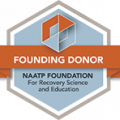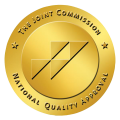Often, it is said that the first step in recovery is accepting that you have an addiction and making the choice to receive treatment. But what comes after that? For many people, medical detox must precede addiction treatment. This is because stopping the use of drugs through the “cold turkey” method is linked to high rates of relapse.
When someone is addicted to a drug like methadone, the same is true. To stop using this drug, medical assistance from a medical detox program at a detox center is necessary. At best, suddenly stopping the use of methadone will cause uncomfortable withdrawal symptoms, and at worst life-threatening symptoms. In both cases, recovery is hampered by the physical and mental consequences of withdrawal.
For those who are ready to stop taking drugs in a safe and effective manner, medical detox at a detox center is essential. Here at Magnolia City detox, we provide the critical first step in addiction treatment. At our treatment center, you can comfortably and safely cease the use of methadone while receiving evidence-based treatment, support from on-site medical staff, and withdrawal symptoms management.
Methadone’s main use is as a medication administered during medication-assisted treatment for individuals with opioid addiction. When used in conjunction with counseling and other support programs, it helps people with opioid use disorder in their recovery. This is accomplished by lessening the cravings and withdrawal symptoms associated with ceasing use of drugs like heroin.
Methadone works by binding to the same brain receptors that other opioids such as heroin or oxycodone attach to. This action blocks the effects of other opioids, relieves withdrawal symptoms, and reduces cravings. The symptoms and cravings associated with withdrawal can be very difficult to overcome, which is why methadone is often used as part of a comprehensive treatment plan.
Methadone Addiction
Statistical information regarding methadone paints a picture of how necessary methadone detox is in the United States. Around 261,000 people ages 12 and over reported misusing methadone according to the National Survey on Drug Use and Health. Between 1999 and 2020, the CDC reports that more than 564,000 Americans have died from overdosing on any opioid, prescription or otherwise.
Further, the CDC found that over 16,000 deaths in 2020 involved prescription opioids. This data is limited to natural and semi-synthetic opioids, such as methadone. What’s more concerning, this is equivalent to 45 deaths a day. Even worse, the number is greater once data includes synthetic opioids, pharmaceutical fentanyl, and tramadol.
The Risks of Methadone Abuse
- Slow breathing
- Slow heart rate
- Severe drowsiness
- Weak muscles
- Cold, clammy skin
- Small pupils
- Fainting
Addiction to methadone can happen when a person starts to feel that they need methadone in order to feel normal. This can lead to them taking methadone even when it is not prescribed to them. Addiction can also lead a person to keep taking methadone even when it is causing problems in their life, such as job loss or financial problems.
Death from methadone use can happen due to an overdose or through long-term use of methadone. Long-term methadone use can cause a host of different medical complications. In fact, it is not advisable to take methadone if you experience the following health conditions as methadone can exacerbate these conditions:
- Heart disease
- A heart rhythm disorder
- An electrolyte imbalance
- Breathing problems or lung disease
- A history of head injury, brain tumor, or seizures
- Liver or kidney disease
- Problems urinating
- Gallbladder, pancreas, or thyroid problems
- A condition for which you take sedatives
Methadone Withdrawal
Trying to manage methadone withdrawal on your own is difficult. While it most likely will not be life-threatening, without treatment, the intense cravings will be hard to fight off. Further, when a person stops using the drug cold turkey, relapse is almost guaranteed. Therefore, no matter how or why you began using methadone, the best and safest way to cease use is through a methadone detox program.
Symptoms of Methadone Withdrawal
The severity of methadone withdrawal symptoms depends on a few factors, including how long someone has been using methadone, the methadone dosage they were taking, and whether they were using other substances along with methadone. People who have been taking methadone for a long time or at high doses may experience more intense withdrawal symptoms. Withdrawal symptoms from methadone can include the following:
- Agitation, restlessness, and anxiety
- Depression
- Insomnia
- Excessive yawning
- Increased tearing or watery eyes
- Runny nose
- Sweating
- Shivering, trembling, or goosebumps
- Muscle aches or joint pain
- Nausea or vomiting
- Abdominal cramps
- Diarrhea
When it comes to the methadone withdrawal timeline, individuals can expect symptoms to develop over 2 to 4 days. Then, individuals will likely experience symptoms over the course of 10 days. During these 10 days, the symptoms will gradually fade.
How is Methadone Withdrawal Treated?
When someone is tapered off of a drug, it means that they are given a reduced dose over time. At the treatment center, a schedule for reducing your dose will be determined by a medical professional. You will then be monitored to evaluate progress and potentially have your dose adjusted if necessary.
Tapering yourself may sound appealing, but it’s important to note that methadone withdrawal is a difficult process. It can be dangerous and even life-threatening if not done under medical supervision. No matter what, it is important to speak with a medical professional before making any changes to your methadone dose. Getting off methadone is possible, but the best way is the safest way.
Medication-Assisted Treatment for Methadone Detox
- Clonidine: This medication helps treat methadone withdrawal symptoms such as high blood pressure, nausea, rapid heart rate, and cramps.
- Tylenol, Aspirin, and ibuprofen: Over-the-counter pain medications can help ease methadone withdrawal symptoms such as muscle aches and pains.
- Sleep aids: During methadone detox, you may have trouble sleeping. Sleep aids can help you get the rest you need to feel better during this difficult time.
- Bismuth subsalicylate: Also known as Pepto Bismol, this medication can help treat methadone withdrawal symptoms such as diarrhea and nausea.
Medication is effective at treating the physical symptoms of methadone withdrawal, but it is also imperative to address the underlying cause of addiction. This is why methadone detox should always be done under the care of a medical professional. At a drug detox center, complementary treatment such as counseling can provide emotional relief along with the physical relief that detox aims to achieve.
Drug detox can help you get through the initial withdrawal period and start you on the road to recovery. After detox, you will likely enter a methadone treatment program. This will help you stay off the drug and avoid relapse in the future.

















